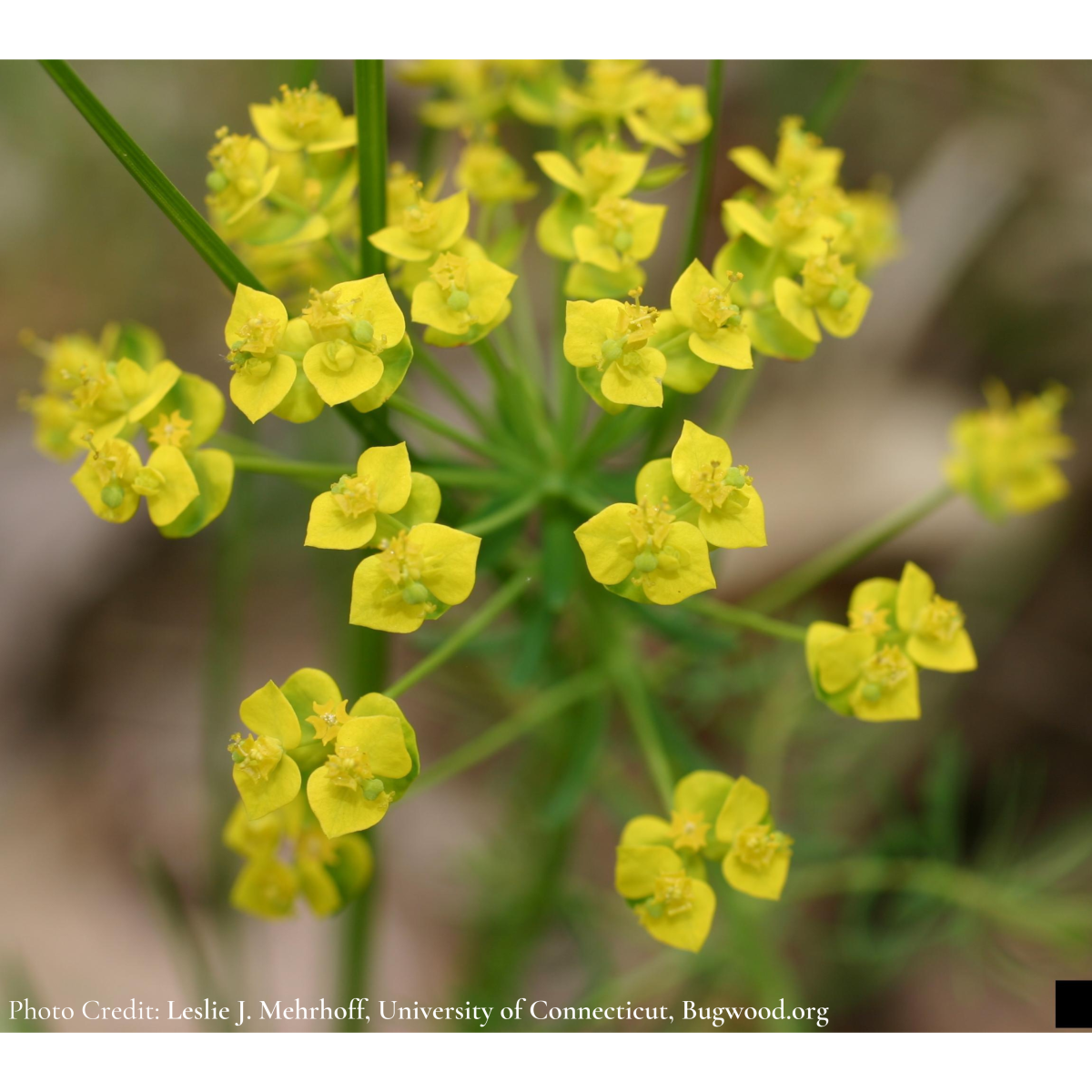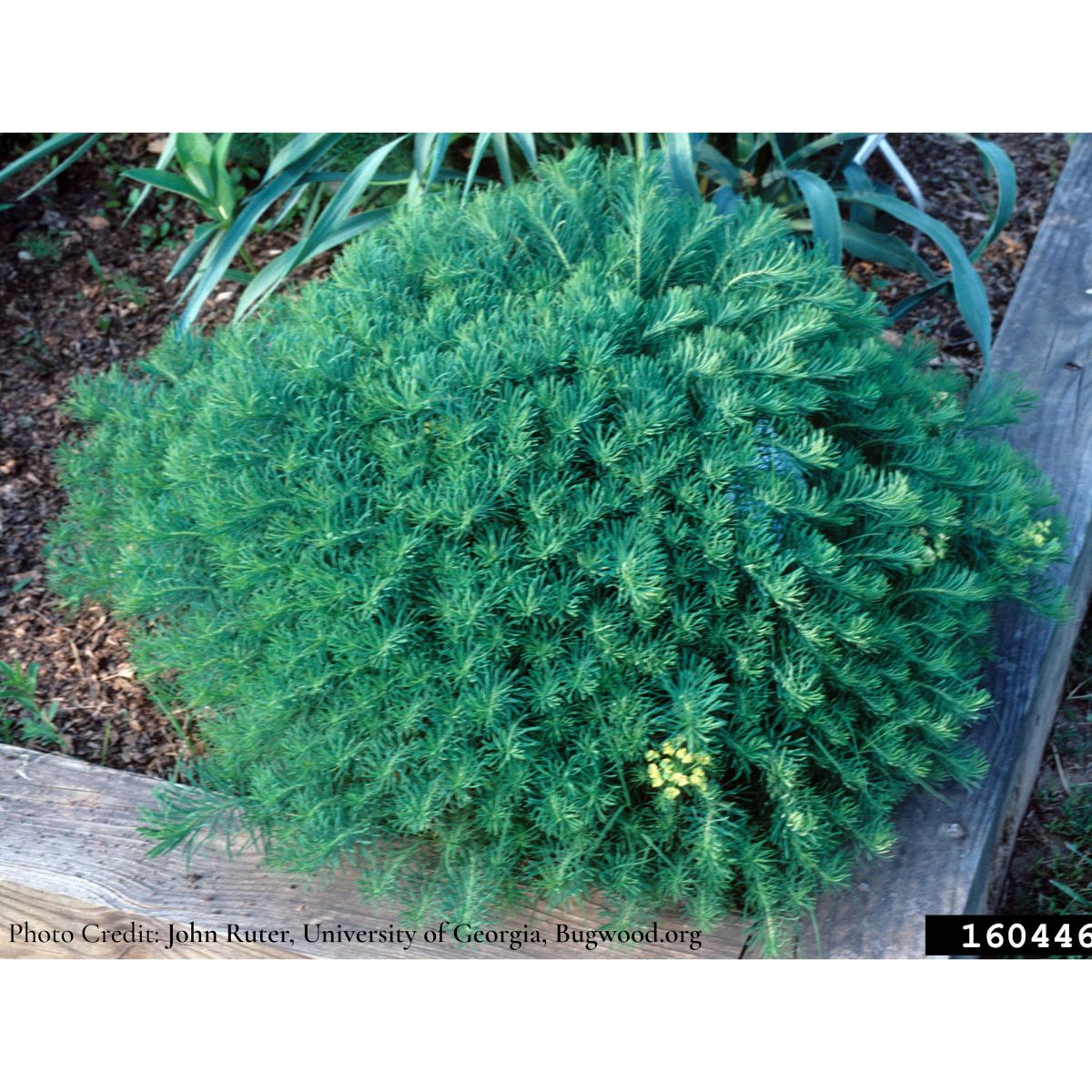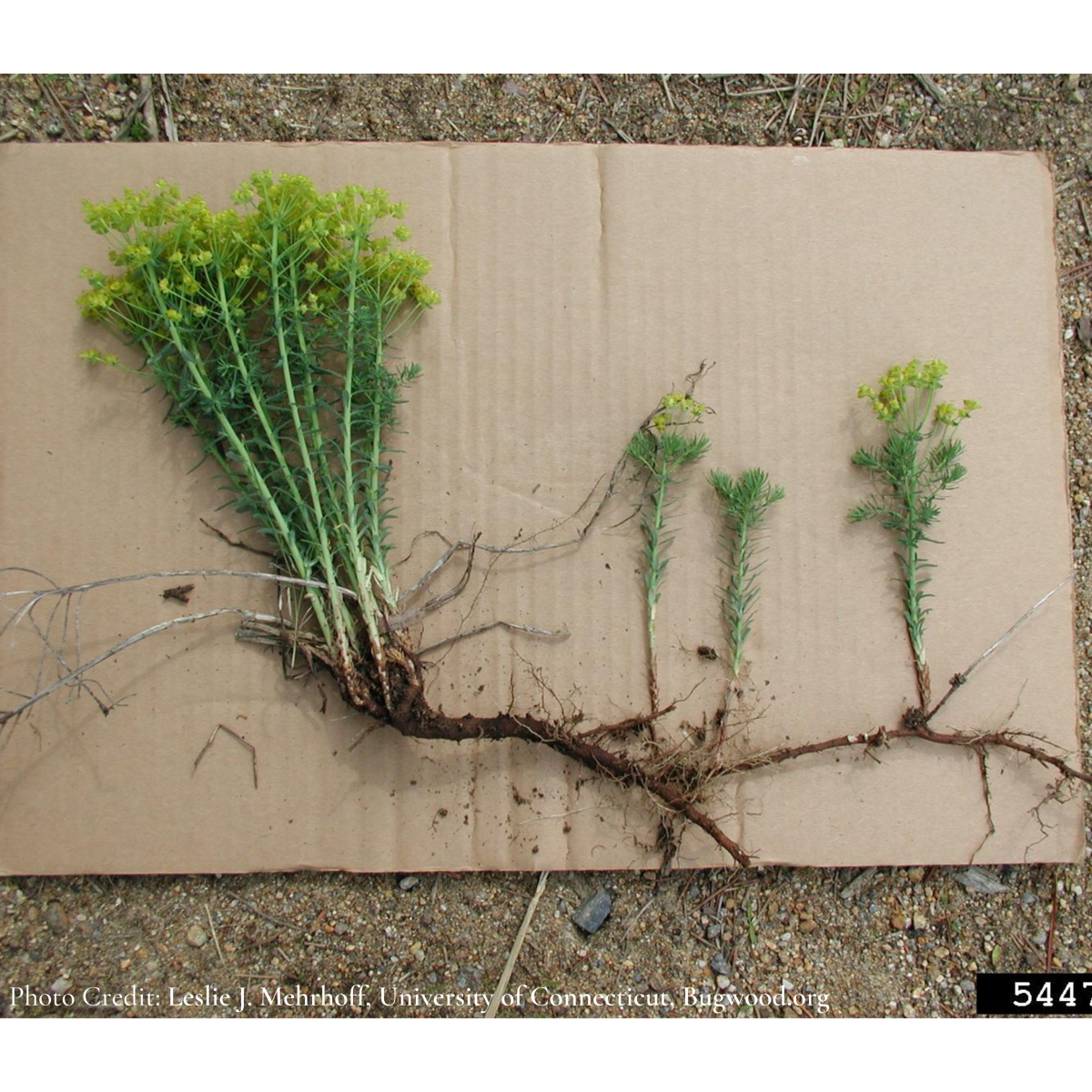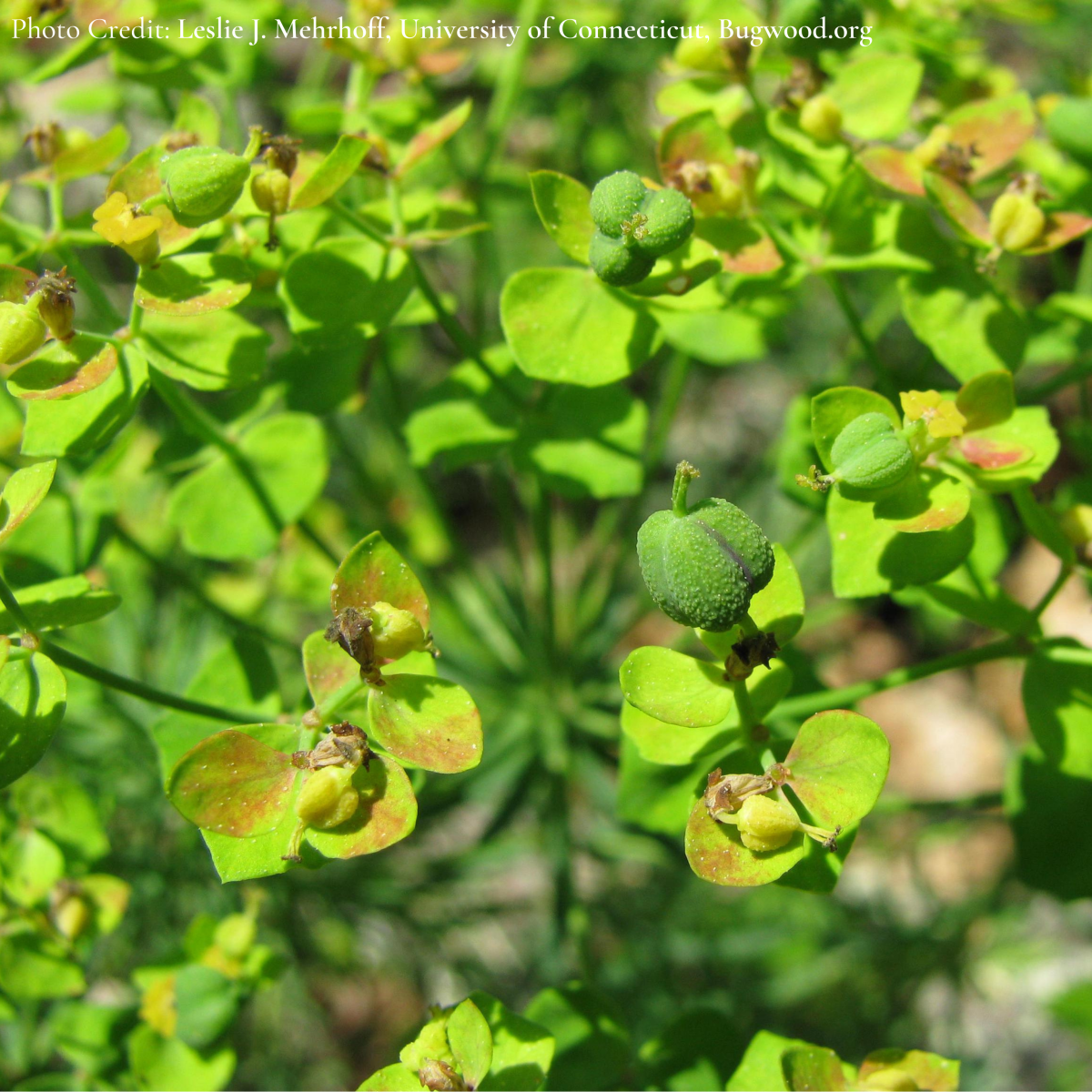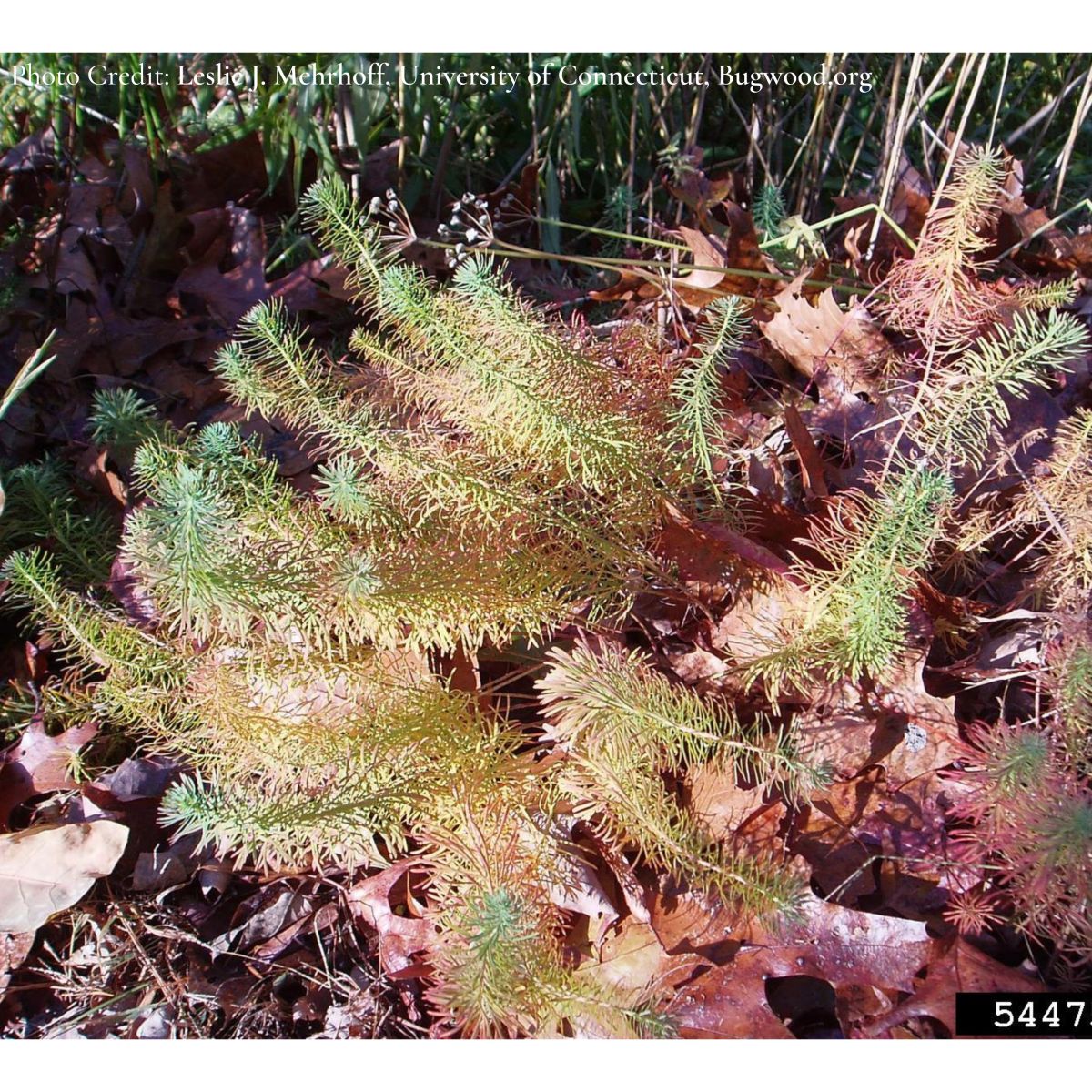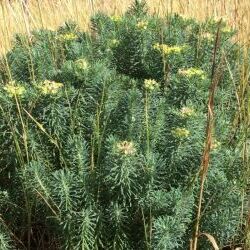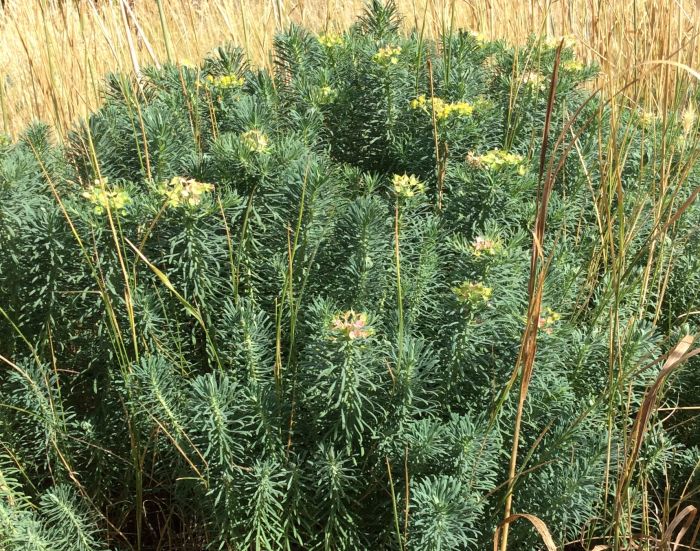
Priority: Eradicate
General: Perennial plant that has a shape of a bottle brush and can form dense bushy stands.
Height: Cypress spurge grows between 10 and 60cm.
Flowers: Yellow-green with heart shaped floral leaves under umbrella-shaped clusters at the top of the plant. When they mature, flowers turn red-green.
Leaves/Stems: It has slender, lance-shaped leaves that grow in singles out of the stem alternately in a spiral pattern. The leaves & stems contain a milky toxic substance.
Root: Horizontal, creeping root.
Graveyard spurge, Graveyard weed, Poor man’s-hedge
Leafy Spurge (Euphorbia esula)
Differences: Cypress spurge is generally a smaller plant that it’s Leafy cousin. Its leaves are narrow and more crowded as well.
Where did it come from? Cypress Spurge is native to Eurasia. It was introduced as a garden plant.
Where does it grow here? It prefers direct sunlight but is tolerant to shade. It occurs in meadows, pastures, roadsides and gardens. In our region, the infestations have occurred on abandoned building sites.
Reproduction: This plant establishes by seed and creeping roots. Seeds can last in the soil for up to 8 years.
When does it grow, flower & seed? Sprouts March-April. Flowers May-June. Seeds June. This plant can flower and set seed multiple times in a season depending on spring weather and temperatures.
Spreads By: People plant and grow Cypress spurge in their gardens. Seed generally falls to the ground next to the plants.
Plant Type: Perennial herb.
- Toxic to horses & cattle.
- It can cause dermatitis & rashes on human skin due to the milky sap.
- It can take over gardens or disturbed sites because it spreads quickly.
- Seeds can last in the soil for up to 8 years. Caution when moving soil.
- Review your property regularly for this species.
- Treatment Remove small patches before it flowers & sets seed. Remove the entire plant and wear gloves to prevent coming into contact with the milky sap.
- Cover bare patches or disturbed soil by planting or seeding with non-invasives.
- Check areas where you have removed invasives for any new plants that year and in future growing seasons.
- Dispose of invasive plants responsibly. Bag them for disposal at the local landfill. Composting and burning is not recommended.
- Contact LRISS for specific treatment recommendations.
Ontario Ministry of Agriculture, Food & Rural Affairs. Ontario Weeds: Cypress Spurge. Web content.
USDA. Fire Effects Information System (FEIS). Website.
E-Flora BC: Electronic Atlas of the Flora of British Columbia
Photo Gallery
